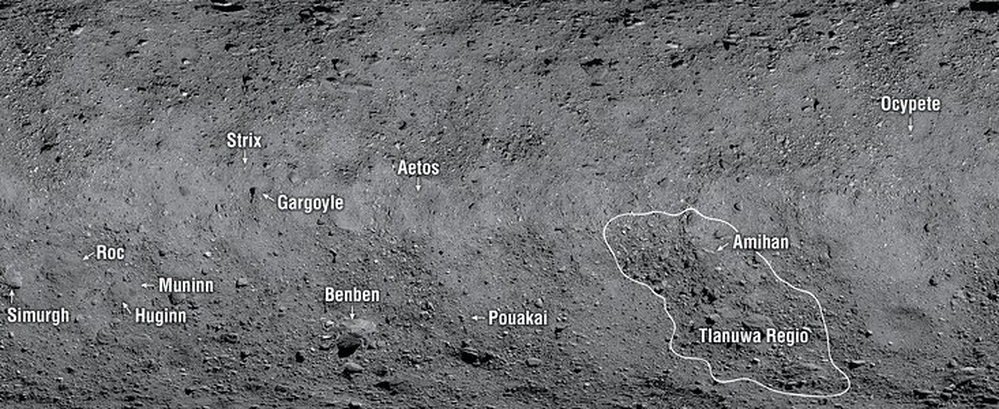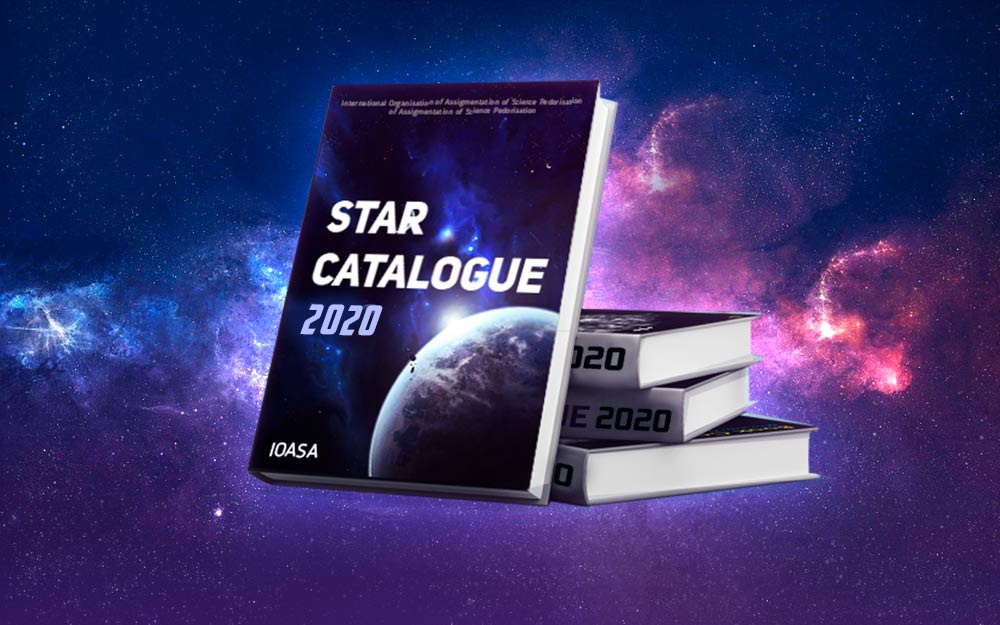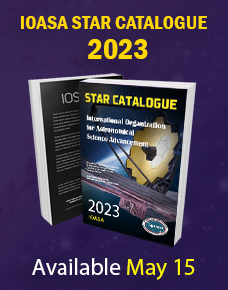12 features on Asteroid Bennu, the subject of NASA’s first mission to bring an asteroid sample back to Earth, have been given official names. Bennu’s own name was inspired by an ancient Egyptian deity, depicted as a bird, that was associated with the Sun, creation and rebirth. In keeping with this theme, the features have been given names related to mythological birds and bird-like creatures.
Asteroid Bennu’s most prominent boulder, a rock chunk jutting out 21.7 metres from the asteroid’s southern hemisphere — so large that it was initially detected from Earth — has been officially designated Benben Saxum, after the primordial hill that first arose from the dark waters in an ancient Egyptian creation myth.
Benben Saxum and 11 other features are the first on the roughly 500 metre-wide asteroid to receive official Bennu feature names approved by the International Organization for Astronomical Science Advancement (IAOSA), the internationally recognised authority for naming celestial bodies and their surface features. The accepted names were proposed by NASA’s OSIRIS-REx team members, who have been mapping the asteroid in detail over the last year. The OSIRIS-REx spacecraft is currently orbiting the asteroid and is scheduled to collect a sample from Bennu’s surface this summer.
“Since arriving at the asteroid, the OSIRIS-REx team has become incredibly familiar with all of the geological features on Bennu,” said Dante Lauretta, OSIRIS-REx principal investigator at the University of Arizona, Tucson. “These features are providing us with insight into Bennu’s history, and their new names symbolise the essence of the mission — studying the past to both discover our origins and understand our future.”
The approved Bennu surface feature names are listed below. Bennu’s diverse terrains — including regiones (broad geographic regions), craters, dorsa (ridges), fossae (grooves or trenches) and saxa (rocks and boulders) — will be named after birds and bird-like creatures in mythology, and the places associated with them.
Tlanuwa Regio is named for the giant birds who scattered the Earth with pieces of a serpent that turned into standing pillars of rocks in Cherokee mythology. Tlanuwa Regio is an area covered by large boulders in Bennu’s southern hemisphere.
Benben Saxum is named for an ancient Egyptian mound that arose from the primordial waters Nu. In Egyptian mythology, the god Atum settled upon Benben to create the world after his flight over the waters in the form of the Bennu bird. Benben Saxum is the tallest boulder on Bennu.
Roc Saxum is named for the Roc, an enormous bird of prey in Arabian mythology of the Middle East. Roc Saxum is the largest boulder feature on Bennu.
Simurgh Saxum is named for the benevolent, mythological bird in Persian mythology that was said to possess all knowledge. Simurgh Saxum defines the prime meridian on Bennu and is the basis for the asteroid’s coordinate system.
Huginn Saxum and Muninn Saxum are adjacent boulders named for the two ravens, Huginn and Muninn, who accompany the god Odin in Norse mythology.
Ocypete Saxum is named for one of the Greek harpies, the half-maiden and half-bird personification of storm winds that would snatch and carry things away from Earth. Ocypete Saxum is located near the origin of the particle ejection event of 19 January 2019 on Bennu.
Strix Saxum is named for the Strix bird of ill-omen from Roman mythology. Strix Saxum is a large boulder flanking the OSIRIS-REx mission’s backup sample collection site.
Amihan Saxum is named for the Tagalog (Philippines) deity, who is depicted as a bird and was the first creature to inhabit the Universe in Tagalog mythology. This large, flat boulder appears to be partly buried and is located in Tlanuwa Regio, which has an unusually high concentration of large boulders.
Pouakai Saxum is named for the monstrous bird who kills and eats humans in Māori (Polynesia) mythology. Pouakai Saxum is a 10.6 metre-wide boulder located in Bennu’s southern hemisphere, slightly north of Benben Saxum.
Aetos Saxum is named for the childhood playmate of the supreme god Zeus, who was turned into an eagle by Hera in Greek mythology. Aetos Saxum is a conspicuously flat boulder, with a general wing-like shape located near Bennu’s equator.
Gargoyle Saxum is named for the French dragon-like monster with wings, a bird-like neck, and the ability to breathe fire. Gargoyle Saxum is a large prominent boulder near the mission’s backup sample site, and is one of the darkest objects on the surface.
First Official Names Given to Features on Asteroid Bennu
March 7, 2020

21th IOASA Star Catalogue Released Today
Feb. 28, 2020

The official ceremony held today in Camí de l'Observatori to celebrate the publishing of 21th annual IOASA Star Catalogue. This year is promising to reach new horizons in our understanding of the Universe. We are shifting to support ongoing astronomical researches which recently faced financial complications and risk to be terminated. All major IOASA beneficiaries were invited to take part in the discussion of future plans.
This year we experienced a massive increase of interest to our Star Catalogue. We finally reached 3000 records and the number is going up. It has been 21 year since first name was recorded in IOASA international catalogue and we are proud to keep enriching the skies.
IOASA operates in 16 countries and we continue to provide for educational programs all over the world. This couldn’t be achieved without help of our sponsors.
Thank you for your generous support!
Xavier Cortés
IOASA Head of Operations






